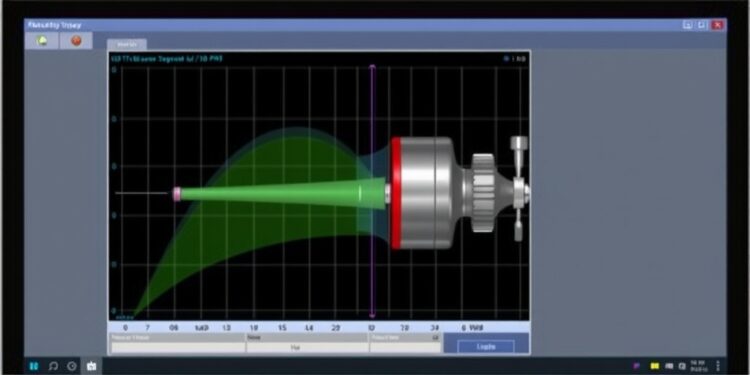In the realm of biomedical engineering, the measurement of joint torque has traditionally been fraught with challenges predominantly tied to the alignment of measurement devices with the anatomical axes of the joint being assessed. Misalignment can significantly compromise the accuracy of torque readings, leading to inconsistent and unreliable data. However, a groundbreaking advancement in this field promises to revolutionize how joint torque is measured, effectively providing a solution to this pervasive issue. Researchers have introduced an alignment-free adaptive joint torque measurement system (AFAJTM) that boasts significant enhancements in both precision and adaptability.
The AFAJTM system has been meticulously designed to address the discrepancies often encountered when using standard dynamometers during torque assessments. Traditional methods necessitate precise alignment to ensure accurate readings; however, the AFAJTM system eliminates the prerequisite for such alignment, allowing for torque measurement to occur in more practical and varied settings. This innovative system stands out by being not only highly accurate but also adaptable to various clinical and research environments, thereby expanding its applicability.
A pivotal component of the development process was the creation of the elbow joint torque measurement device (EJTMD). This device serves as a cornerstone for the AFAJTM system, enabling precise measurements across a range of misalignment configurations. Through extensive testing and validation, researchers were able to assess the efficacy of the EJTMD in real-world conditions, providing a comprehensive overview of its performance when faced with varying degrees of misalignment. This rigorous testing not only validated the device’s capabilities but also highlighted its potential to become a standard tool in both clinical and research settings.
Importantly, simulations conducted during the development phase indicated that the AFAJTM system could achieve a remarkable level of precision, maintaining measurement errors within ±0.5 Nm across multiple misalignment positions. Such accuracy is pivotal in ensuring that clinicians and researchers can confidently rely on the data produced by the EJTMD, fundamentally transforming how joint torque assessments are conducted. The clinical experiments undertaken further corroborated the simulation results, demonstrating that the EJTMD provides consistent torque measurements, even when subjected to misalignment.
In one key phase of the clinical evaluation, torque measurements obtained from the EJTMD were compared directly against those from a conventional dynamometer during maximum voluntary contraction (MVC) tests. These comparisons unveiled striking similarities in torque readings, thus affirming the EJTMD’s reliability. The findings underscored that despite the inherent challenges associated with misalignment, the AFAJTM system can deliver results that closely mirror those achieved by traditional methods.
Beyond its impressive accuracy and reliability, the AFAJTM system introduces a level of adaptability that is rarely seen in measurement technologies. The system is poised to accommodate a wide range of users and applications, from clinical therapy settings to sports science research. This adaptability ensures that practitioners in various fields can embrace the benefits of adaptive joint torque measurement without the limitations imposed by traditional dynamometer designs.
Clinicians and researchers are particularly keen on this advancement, as joint torque is essential for assessing muscular function, rehabilitation progress, and injury prevention strategies. The ability to conduct assessments without the need for meticulous alignment simplifies the process and broadens the scope of potential applications. Patients who previously may have struggled to achieve optimal positioning during assessments can now participate more freely, leading to more inclusive and comprehensive data collection.
With the emergence of the AFAJTM system, the future of joint torque measurement appears remarkably promising. As the system enters various stages of clinical adoption, its impact on rehabilitation strategies and muscle performance assessments will undoubtedly be profound. The potential for widespread implementation underscores the importance of ongoing research and validation in the field of biomedical engineering.
The advent of such advanced measurement technologies emphasizes the need for continuous innovation within the field. As the AFAJTM system is refined and implemented, it is likely to inspire further advancements that will push the boundaries of measurement accuracy and reliability. This echoes the ongoing commitment within the biomedical engineering community to enhance diagnostic capabilities and improve patient outcomes through technological progress.
Ultimately, the introduction of the AFAJTM system marks a significant leap forward in the quest for accurate and reliable joint torque measurement. By addressing the critical issue of misalignment, this system not only promises to enhance measurement precision but also paves the way for new methodologies that can transform how practitioners approach joint assessments. As research continues and results accumulate, the full impact of this innovative technology on clinical practice and research will unfold, offering exciting prospects for the future of biomedical engineering.
In conclusion, the AFAJTM system represents a compelling fusion of engineering innovation and clinical necessity, presenting a transformative solution to a longstanding challenge in joint torque measurement. As this technology evolves, it will be essential to observe how it shapes practices in rehabilitation, sports performance analysis, and broader fields that rely on accurate torque data. The systemic integration of such advancements will undoubtedly contribute to the overarching goal of improved health outcomes and enhanced performance metrics across various disciplines.
Subject of Research: Joint Torque Measurement Systems
Article Title: Design and Validation of an Alignment Free Adaptive Joint Torque Measurement System
News Publication Date: [To Be Determined]
Web References: [To Be Determined]
References: [To Be Determined]
Image Credits: [To Be Determined]
Keywords: Joint torque measurement, alignment-free system, adaptive technology, biomedical engineering, EJTMD, muscle performance assessment, torque consistency, clinical trials, biomechanical engineering, rehabilitation technology, dynamometer innovations.




